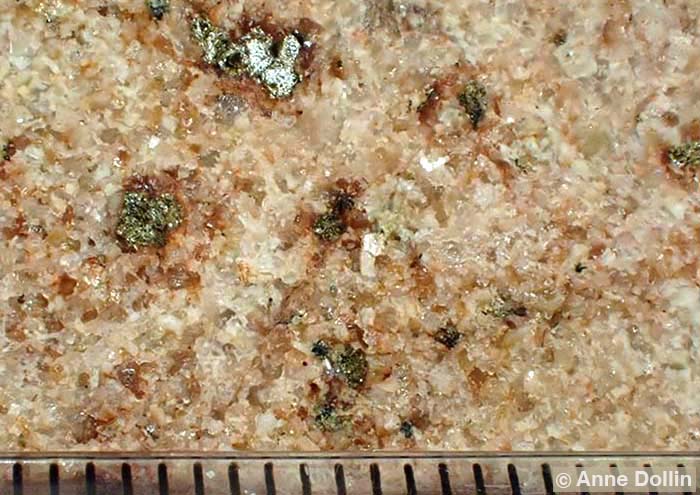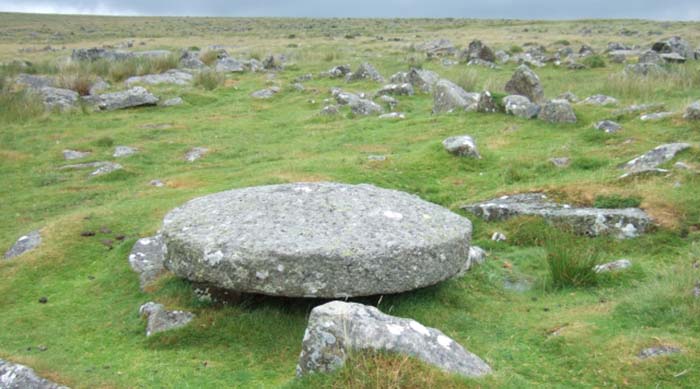
Millstone Types: Granite
A very hard volcanic rock
Singleton Mills homepage > Overview of Stone types used for Millstones > Granite Millstones
Granite millstone quarries
Granite is a very hard, coarse-grained, crystalline, volcanic rock composed of quartz, feldspar, and plagioclase. Millstones have been quarried from granite in England, Scotland, Europe, and the United States.

Above, detail of the large, colourful, interlocking grains that make up this sample of granite stone from near Bathurst, NSW. The full width of this image shows a 20mm-wide section of the stone. Macro image by Anne Dollin.
In southwestern United Kingdom (UK), there was a thriving granite millstone industry on Dartmoor in Devon until at least the 1500s. The millstones were cut from loose boulders of granite that had split off the tors on the moor.[1] The other major deposit of granite in the UK was in southwestern Scotland – granite millstones were cut from the Glenstocken Quarry in the Dumfries region.[2]

Above, a rounded granite stone near Merrivale, Dartmoor, Devon, UK, that may be an abandoned millstone. Numerous abandoned millstones have been documented on Dartmoor in the Dartefacts website – many are quite complete, fully-shaped with a circular hole for the drive shaft in the centre. Photograph by David Smith. Wikimedia Commons.
Millstones were also cut from glacier boulders!
Interestingly, granite millstones have also been found in areas of the UK that lack granite deposits, such as the West Midlands area. X-ray diffraction analyses[1] have shown that the granite cut to make the West Midlands millstones originally came all the way from Scotland! Glaciers had transported huge granite boulders from Scotland to the West Midlands during the last glacial epoch. Then, in the 1600s, millstones were cut in the West Midlands from these loose boulders. Similar granite boulders appear to have been quarried on the Isle of Man.[3]
Pros and cons of granite millstones
Granite could make successful millstones, but the process of milling grain tended to highly polish the grinding surface. So, granite millstones needed to be re-dressed more often than millstones made from some other stone types. In the UK, granite millstones were generally used where deposits were nearby, or transport costs were acceptable.[1]
REFERENCES
1. Langford, Ian (2011) Granite millstones of Shropshire and adjoining counties. Proceedings of the Shropshire Geological Society, 16: 51-59.
2. Hockensmith, Charles D (2009) The Millstone Industry. McFarland & Company, Inc, Publishers, page 163.
3. Tucker, DG (1977) Millstones, quarries, and millstone-makers. Post-Medieval Archaeology, 11: 1-21, page 15.
Read More About Millstones
•• Overview •• French Burr Stones •• Basalt-like Cullin Stones •• Millstone Grit •• Old Red Sandstone, Puddingstone, and Lodswoth Stone •• Limestone •• Artificial Millstones •• Norfolk Island Millstones •• Colonial Millstones ••